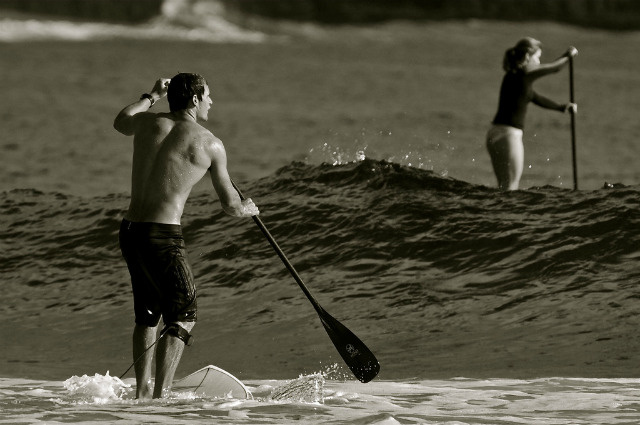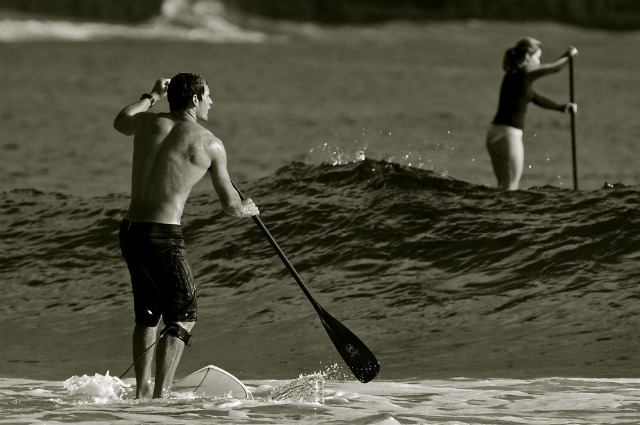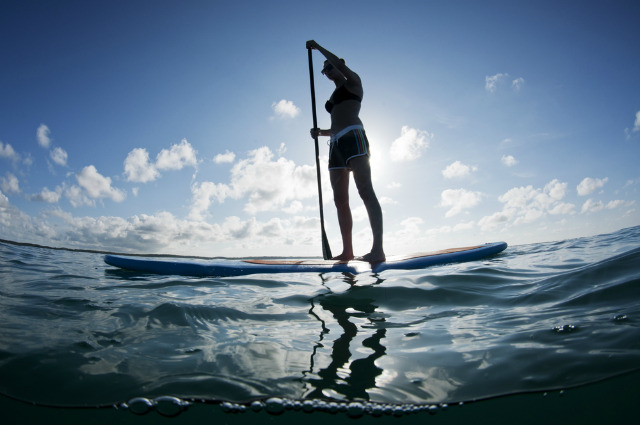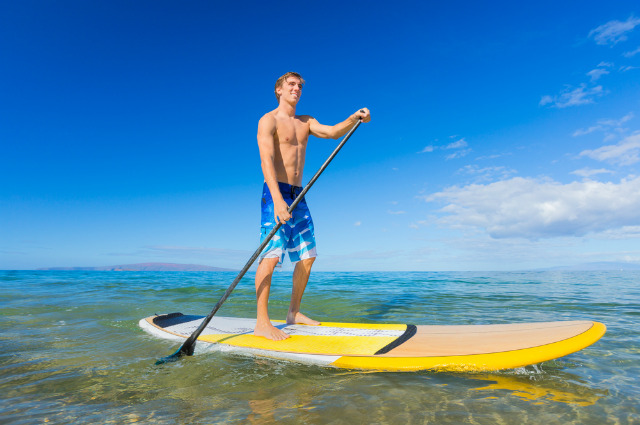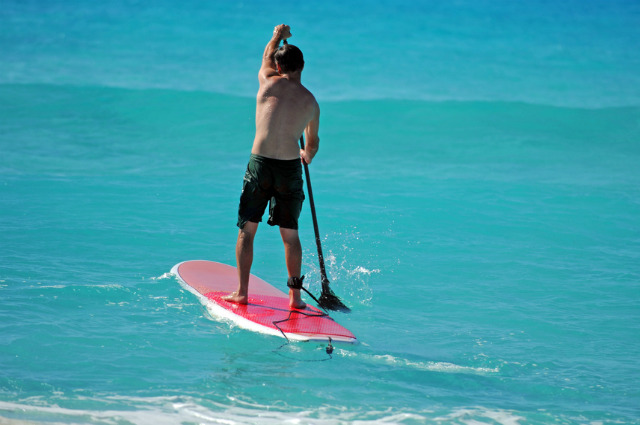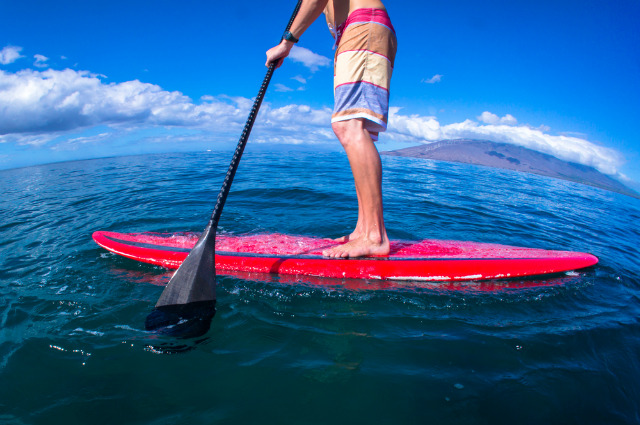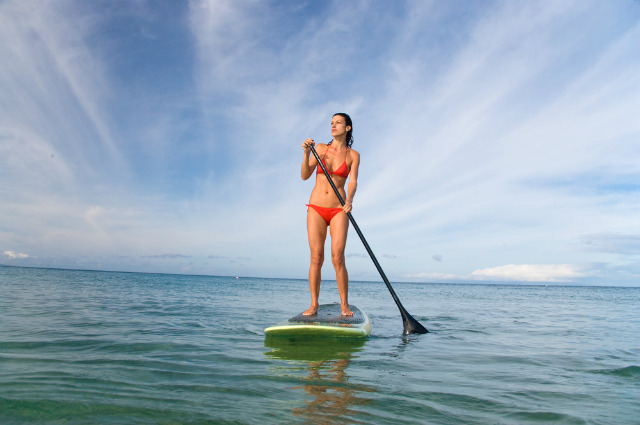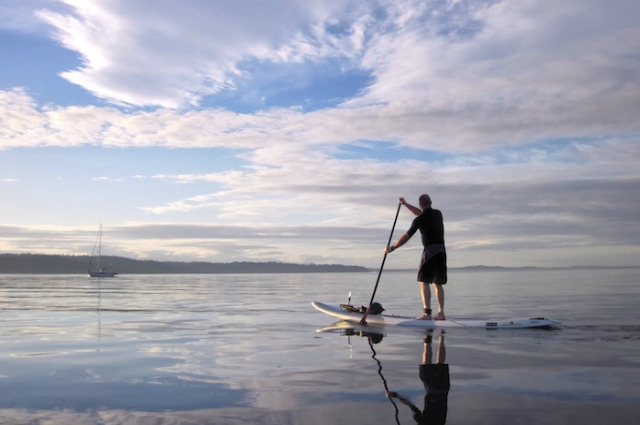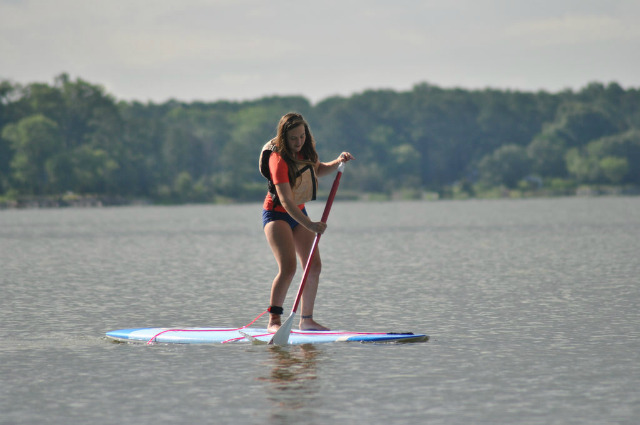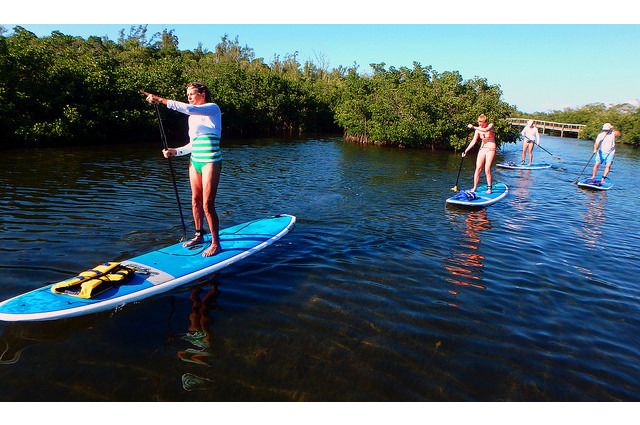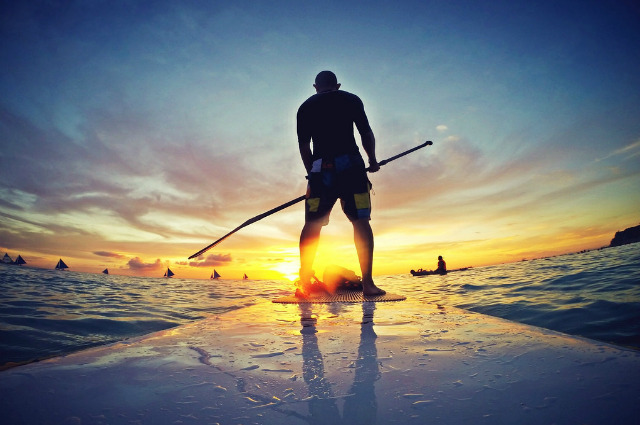10 Reasons Stand-Up Paddleboarding Is Actually A Killer Workout
10 Reasons Stand-Up Paddleboarding is Actually a Killer Workout
Sure, if you watch someone on a paddleboard, it doesn't look like the sport requires all that much effort, but once you plant your feet on a board and head out to sea you quickly learn the effort involved goes way beyond what meets the eye. "I see people with a strong core whose legs are shaking in two minutes. Sometimes people who look aesthetically the most fit are the worst at it," SUP world champion Annabel Anderson told Competitor. "It's a real wake-up call.
Don't let this increasingly popular sport intimidate you, though. Once you've mastered the basics it can serve as an extremely beneficial component to almost any exercise routine. Here's why SUP can actually be considered an effective form of exercise, rather than just a relaxing recreational activity.
It’s More Intense than it Looks
The level of intensity certainly depends on what type of water you're boarding on, but even if you're just paddling along over flat, calm waters your balance, strength and endurance will be put to the test all at once. Add waves to that equation and your workout will be increasingly more difficult.
All About The Core
SUP puts nearly every single muscle in your body to work, but one area that's targeted the most while you're out on the water is your core. Maintaining your balance requires constant engagement of your abdominal muscles and, along with the muscles in your upper body, they'll contract as you row from side to side. "When most people think SUP, they assume it's all about the arms—it's not," explains Jose Gonzalez, ACE Certified personal trainer, ACA SUP Instructor Trainer and REI outdoor programs and outreach market manager. "It works your core and legs through the movement of bringing the paddle to the board. Specifically, SUP engages the deltoids, rotator cuffs, traps, pectoralis major, latissimus dorsi, supraspinatus, and your abdominal muscles."
Cardio and Strength Combo
As we mentioned earlier, this may not look like a sport that could get your heart rate up, but if you move swiftly enough a SUP ride can serve as a cardio workout that, of course, also includes an element of strength training as your core and legs are contracted to maintain balance and your upper body maneuvers the paddle to propel you forward. Gonzalez says just like with running or cycling you can use SUP to train with target heart rates. "When I do interval training, I go two minutes at a max heart rate, with 30 seconds at a rest rate with gentle strokes," he explained. "The length of time on the board depends on my schedule, but I go at least 30 minutes. In a typical training day—not too slow and not too fast—I do about five miles in about an hour."
Cross Training for All Athletes
Since SUP engages nearly every muscle in the body, it makes a great cross training option for almost any type of athlete. It challenges both aerobic and muscular fitness, as well as balance and stability, which means it can help improve sport-specific performance for many other types of activities.
Burns a Boatload of Calories
According to SUP World Magazine, paddleboarding can burn anywhere from about 300 to more than 1,000 calories in one hour. Casual boarders could torch about 300 to 430 calories per hour, and, on the other end of spectrum, SUP racers may burn anywhere from about 700 to 1,125 calories per hour.
Stress-Busting Benefits
Chronic stress comes along with a host of nasty side effects that can wreak havoc on our health, but exercise has the power to help us de-stress and counteract the negative effects of feeling over-pressured. For this reason, including a form of exercise that truly helps you feel at peace is an important part of any fitness routine and the calming nature of SUP absolutely exudes this quality. "I have personally found that stand-up paddling has always been an excellent stress coping method for me," Sam Barrows, an avid stand-up paddler, wrote on ISUPworld.com. "Once I get out on the water and start paddling, I can literally feel my body and mind relaxing as I get into the paddling rhythm."
Better Balance
Whether you play a sport that demands impeccable stability technique or your aiming to combat an age-related decline in fitness, the balance skills you'll gain from SUP are incomparable to almost any other sport or activity. "You may fall a lot when your first start out, but if you keep at it your overall balance will greatly improve," Barrows explained.
Engage with the Great Outdoors
Exercising outside is associated with a host of profound health and fitness benefits, which means the fact that your SUP workout will likely take place in the great outdoors only helps to support its case as a killer workout. From reducing stress and improving your sleep quality to boosting your vitamin D levels, there are a handful of important reasons to spend more time being active outside. "It's great for your emotional well-being," Gonzalez added. Not to mention, working out outside may literally encourage you to work harder. A 2014 study reviewing the physiological and psychological outcomes of indoor cycling compared to outdoor cycling found that participants who rode outside exercised at a higher intensity despite similar environmental conditions and perceived exertion.
Enjoyable Exercise
Ask any fitness expert, the easiest way to make sure your exercise habit remains consistent is to make sure you participate in activities you truly enjoy. That way, you'll look forward to your workouts instead of approaching them with dread and reluctance. Likely you'll find that SUP feels less like work and a lot like fun, so you'll get a great workout without really ever feeling like you're "working out."
Low Impact, High Intensity
SUP is challenging, yes. But because it's a low-impact activity, meaning it's easy on your joints, it's suitable for individuals of all different ages and fitness levels. "SUP training gives you cardio training and strength training," Gonzalez said. "SUP, when done correctly with posture and stroke, can be more forgiving than running and cycling. Plus, the water creates great resistance."
